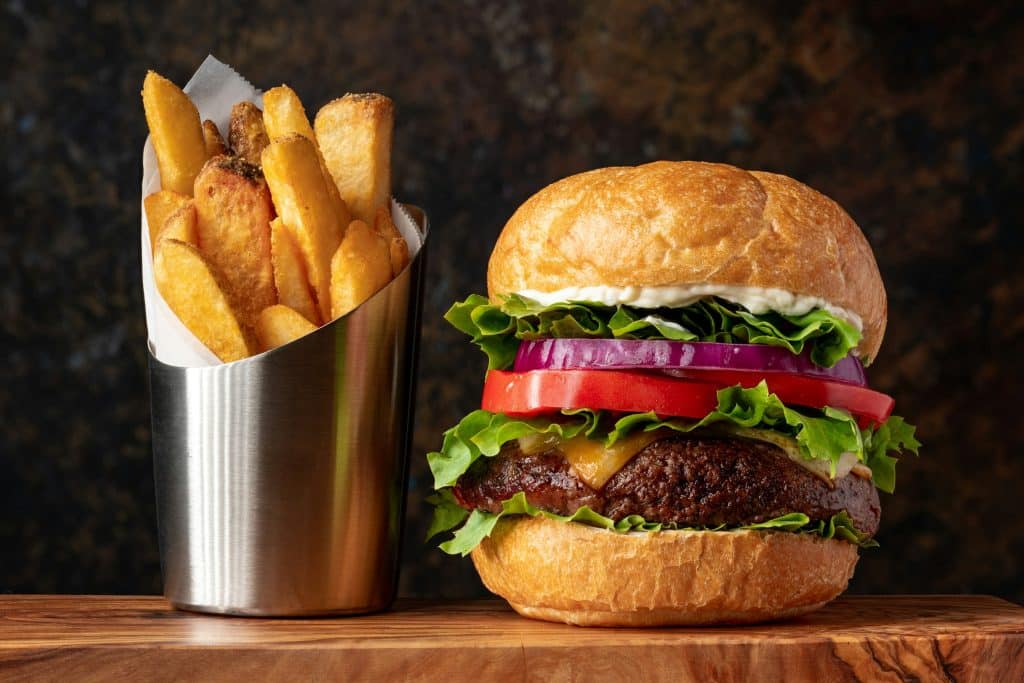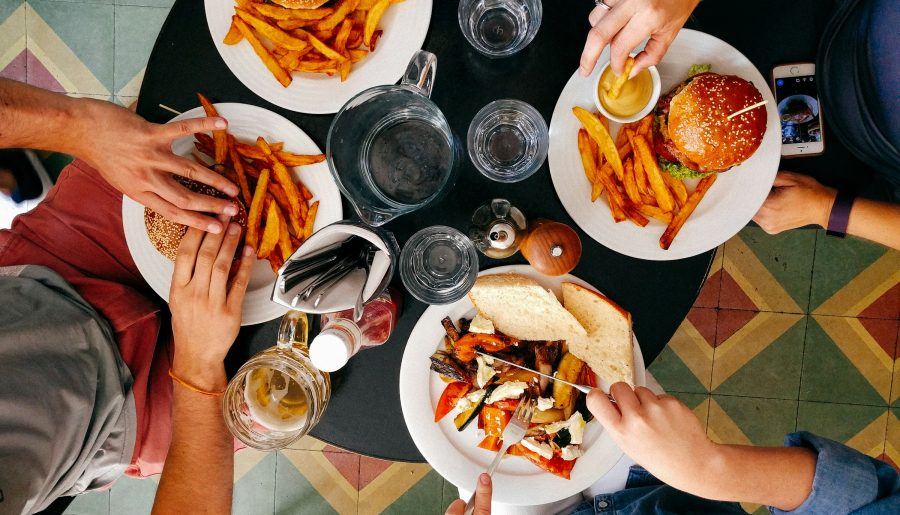Have you ever found yourself craving your favorite comfort food when you’re down or stressed?
If you have, don’t worry. You’re not alone. We’ve all been there. I do, too!
Maybe it’s eating a slice of pizza or two, a big bowl of creamy pasta, a bag of chips, or hearty chicken noodle soup. Perhaps it’s a slice of chocolate cake, freshly baked chocolate chip cookies, a tub of ice cream, a candy bar, or a cup of hot chocolate.
Whatever it is, we all have that one pick-me-up meal we turn to in times of need. Food that gives us a sense of comfort and nostalgia, like a warm hug at difficult times.
My go-to comfort food is burgers and fries. (I know it may not be the healthiest coping mechanism, but it sure picks me up when I’m sad or after a long, stressful day, at least temporarily.)

But have you ever wondered why we crave certain foods when we’re feeling stressed or sad?
Curious?
Then, read on to learn! We’ll uncover some of the possible reasons why we crave certain meals when we’re feeling down.
Why We Stress-Eat
One way people deal with negative emotions such as stress, anxiety, sadness, or boredom is through stress-eating, also known as emotional eating.
When we’re stressed, our bodies release cortisol, a hormone that increases appetite and causes us to crave sugary, fatty, or salty foods. However, cortisol also plays a role in regulating our stress response.

Another explanation for stress-eating is that certain foods activate the brain’s pleasure centers and reward systems.
When we eat delicious food, our brain releases dopamine, the “feel-good” hormone that makes us feel good, satisfied, and motivated.
According to research, consuming comfort foods, especially highly processed ones, could lead to a temporary mood boost lasting up to a couple of hours.
The positive feeling we experience whenever we eat a particular food is reinforced by the release of dopamine, which conditions us to crave that food even more.
Eating simple carbohydrates like bread, pasta, candy, pastries, and donuts can increase insulin levels, also known as the “happiness hormone,” and lead to a calming sensation within 30 minutes. In addition, serotonin also increases for a further feeling of relaxation.
What else makes something a comfort food?
Another possible reason is the memories and connections we have with certain meals.
For example, your grandmother made chocolate chip cookies whenever you’re sad. So, you might stop by the bakery for a sweet treat after a tough day at school or work.

According to Shira Gabriel, a psychologist at the University of Buffalo, “Comfort foods are often the foods our caregivers gave us when we were children. As long we have a positive association with the person who made that food, there’s a good chance that you will be drawn to that food during times of rejection or isolation.”
How Eating Comfort Foods Affects Health
While eating comfort foods gives us a temporary mood boost, frequent and uncontrolled indulgence affects our overall health.

Stress eating can lead to unhealthy food choices, such as high-fat and high-sugar foods. It can also cause overeating and weight gain, which increases the risk of health issues such as heart disease, diabetes, and high blood pressure.
How to Relieve Stress Without Overeating
This is not to say you should completely stop eating your go-to comfort food whenever you’re stressed or sad.
Remember. It’s okay to eat when you’re feeling down. It’s never okay to shame yourself over your food choices, as it’ll affect your overall mental health even more and make you feel worse.
So what can you do instead to relieve cravings and manage stress eating?
Here are some ways you can try:
Moderation

Remember that it’s okay to give in to cravings every now and then, as long as it’s always in moderation. You can also try smaller dishes to make your food portion size smaller.
Eat Healthier Stress Foods

There are many great tasting healthier options, like dark chocolate and nuts. You can make a bag of homemade trail mix with with nuts, chocolate chips, raisins, dried coconut, etc. Popcorn is another great healthy option that tastes great and meets that crunch need you may be craving. Pretzel sticks are also good in moderation. Other items can include dried fruits, dates, and veggie chips.
Substitution

You can replace stress-eating with other activities, such as taking a 10- to 15-minute walk, exercising, drinking a glass of water, writing in a journal, or getting back to your hobby.
Mindfulness

Practicing mindful eating involves paying attention to your body’s hunger cues and fullness. This includes eating slowly, avoiding distractions during meals, savoring each bite, chewing your food well, and checking how you feel before, during, and after your meal.
Doing these can also help you be more aware of your eating habits and gain greater control over binge eating.
Stress Management

Managing stress can help reduce dependence on food as a coping mechanism. You can explore other ways to reduce stress, like yoga, meditation, or deep breathing exercises, which can help relieve emotional triggers for cravings.
Seek Support

Consider seeking support from a registered dietitian or a mental health professional if your food cravings or stress eating is affecting your health and mental health. They can offer useful strategies and advice for managing cravings and reducing weight gain.







